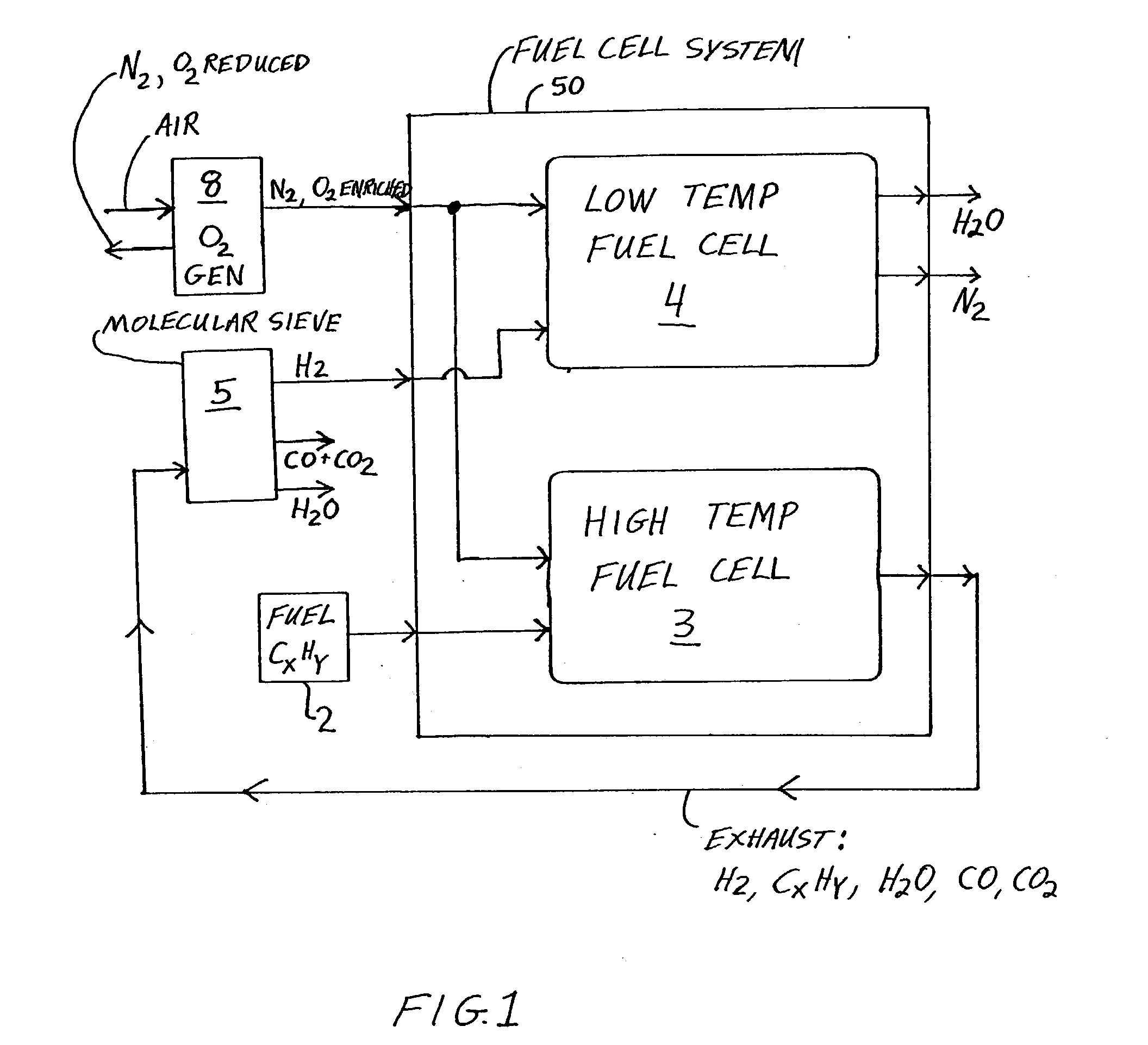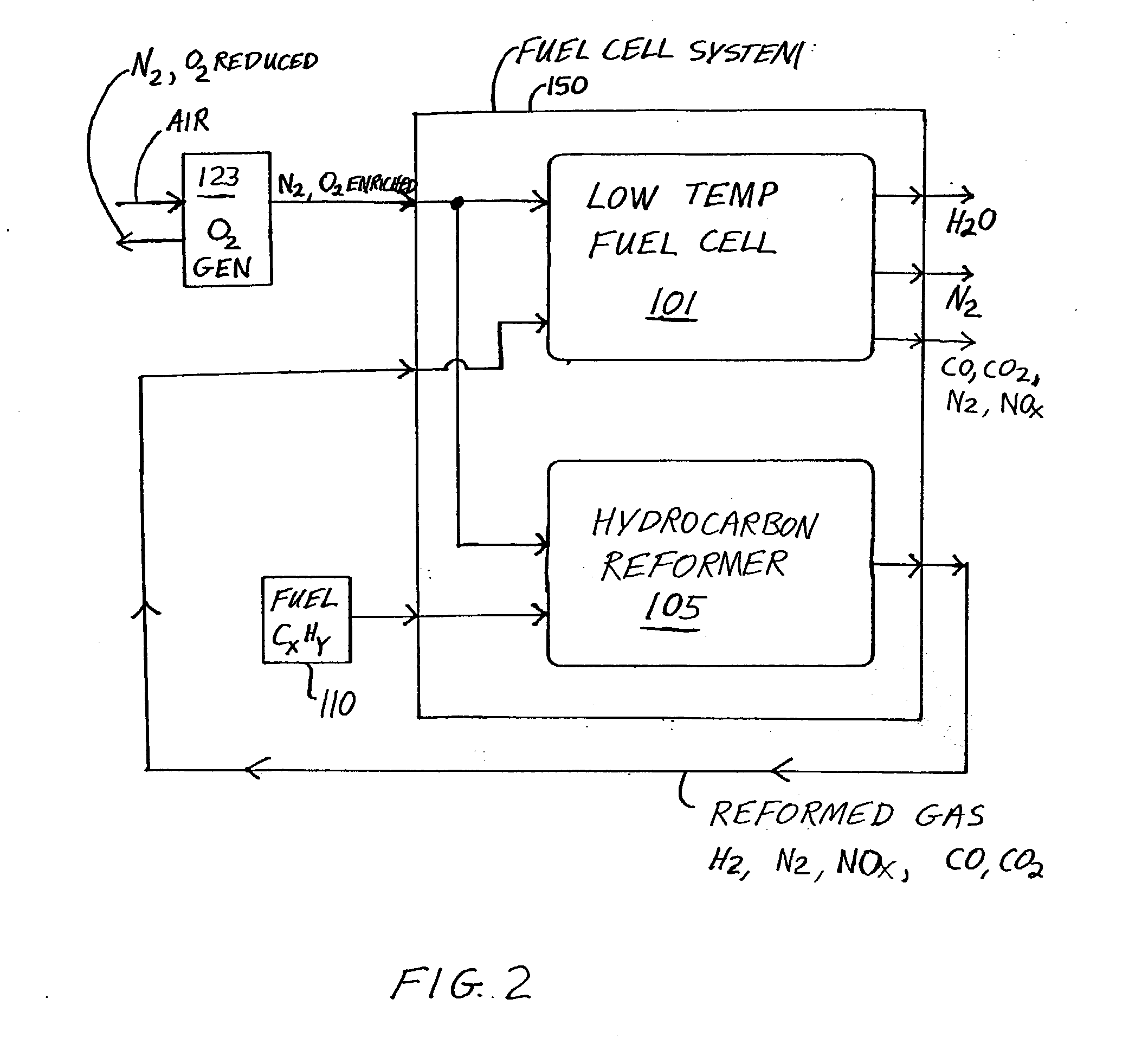Fuel cell system and method with increased efficiency and reduced exhaust emissions
a fuel cell and efficiency technology, applied in the field of fuel cell systems and methods with increased efficiency and reduced exhaust emissions, can solve the problems of undesired thermochemical reactions, inefficiencies and undesired side effects in the process, and 18% of the total input gas is actually availabl
- Summary
- Abstract
- Description
- Claims
- Application Information
AI Technical Summary
Benefits of technology
Problems solved by technology
Method used
Image
Examples
Embodiment Construction
[0020] FIG. 1 is a greatly simplified schematic block diagram showing the major components and connections of a fuel cell arrangement according to a first embodiment of the invention. Only the principle inputs and outputs of each block are shown, while many inputs and outputs have been omitted for simplicity in explaining the principle features, functions and operation of the arrangement.
[0021] This embodiment of the fuel cell arrangement shown in FIG. 1 includes a fuel cell system 50, an oxygen enrichment device or oxygen generator 8, a molecular sieve 5, and a hydrocarbon fuel supply 2, for example supplying kerosene or jet fuel. The fuel cell system 50 includes a low temperature fuel cell 4 (e.g. PEMFC), as well as a high temperature fuel cell 3 (e.g. SOFC). The oxygen generator 8 receives an input of environmental air, and provides an output of oxygen enriched air or gas, predominantly comprising nitrogen (N.sub.2) and an enriched proportion of oxygen (O.sub.2) in comparison to ...
PUM
 Login to View More
Login to View More Abstract
Description
Claims
Application Information
 Login to View More
Login to View More - R&D
- Intellectual Property
- Life Sciences
- Materials
- Tech Scout
- Unparalleled Data Quality
- Higher Quality Content
- 60% Fewer Hallucinations
Browse by: Latest US Patents, China's latest patents, Technical Efficacy Thesaurus, Application Domain, Technology Topic, Popular Technical Reports.
© 2025 PatSnap. All rights reserved.Legal|Privacy policy|Modern Slavery Act Transparency Statement|Sitemap|About US| Contact US: help@patsnap.com



